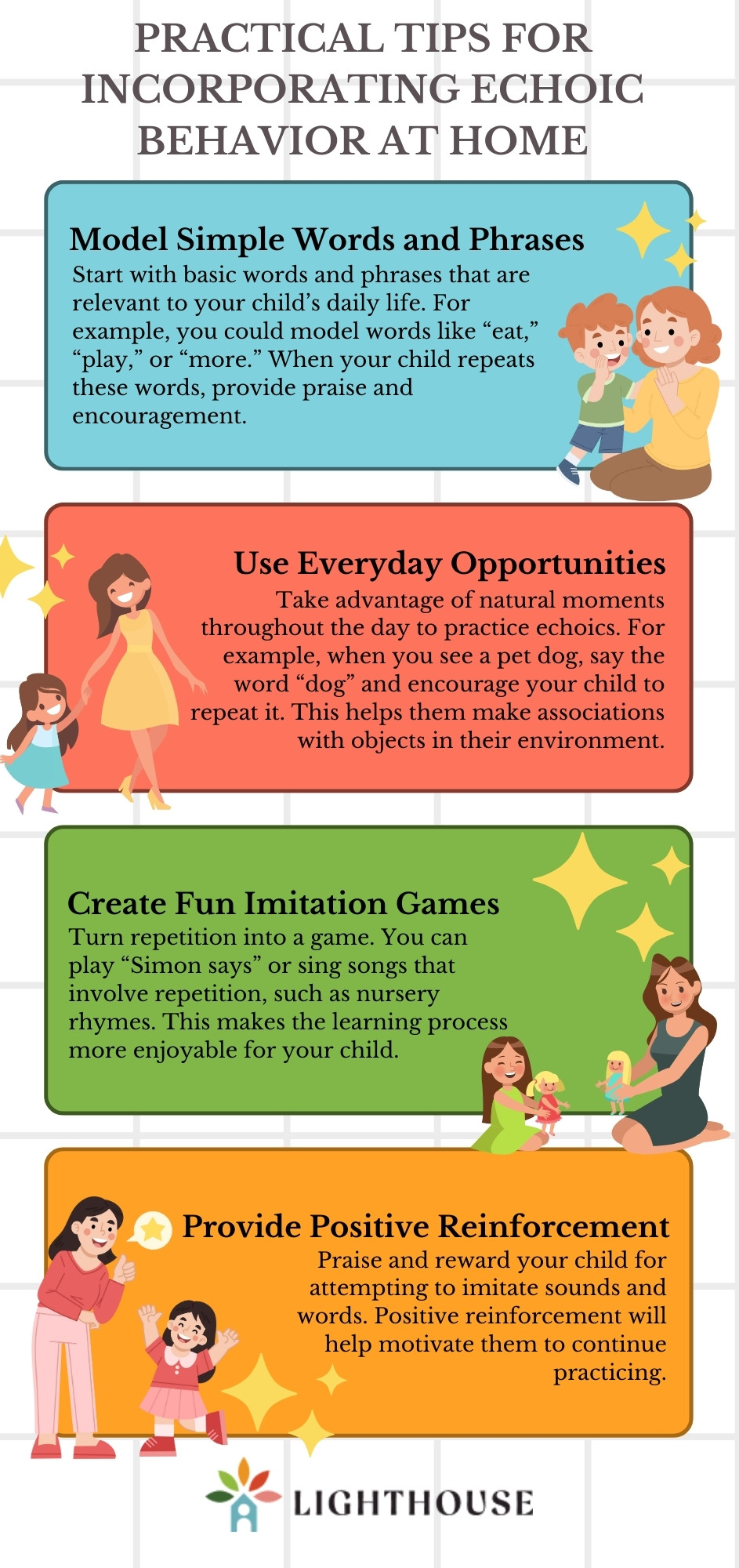Key Points:
- Echoic ABA example refers to a verbal behavior where a person repeats or “echoes” what they hear.
- It plays a significant role in speech development, especially for children with autism.
- Understanding how to implement echoic behavior is key to effective ABA therapy.
Curious about how your child can develop language through ABA? An echoic ABA example teaches children to repeat sounds and words, helping them build speech and communication skills. Discover how this key technique plays a crucial role in developing verbal behavior and language comprehension in children with autism.
What is an Echoic ABA Example?
An echoic ABA example involves a verbal behavior where a person repeats or “echoes” a word, sound, or phrase after hearing it from someone else. In the context of ABA, echoics are an essential building block for developing speech and communication skills. The primary purpose of echoic behavior is to help children learn to imitate sounds and words, which is critical in acquiring language.
For example, if an adult says, “Say ‘dog,’” and the child repeats the word “dog,” that is an echoic response. This simple imitation process helps lay the foundation for more complex language skills, such as requesting, labeling, and conversational skills. Echoics are essential for learning because they help children understand the relationship between sounds and meanings.

What Are Some Echoic ABA Examples in Practice?
Here are a few practical echoic ABA examples that illustrate how this process works in real-life situations:
- Sound Imitation: An adult says, “Say ‘ba,’” and the child repeats the sound, “ba.” This is a foundational step in teaching verbal imitation.
- Word Repetition: The therapist says, “Say ‘cookie,’” and the child repeats the word “cookie.” This helps the child associate the word with the object and lays the groundwork for requesting.
- Phrase Repetition: The therapist says, “Say, ‘I want a drink,’” and the child repeats the phrase. This is a more advanced form of echoic behavior, where the child learns to repeat more complex phrases.
- Sentence Echoing: An adult says, “I see a dog,” and the child repeats the sentence, “I see a dog.” This shows the child learning to imitate complete sentences.
How Does Echoic ABA Fit Into Verbal Behavior?
ABA therapy uses different types of verbal operants to encourage communication. These include echoics, mands, tacts, and intraverbals. Echoic behavior is one of the first steps in teaching verbal communication. Here’s how echoic ABA fits into the larger framework of verbal behavior:
- Echoic: This is the verbal imitation process mentioned earlier, where the child simply repeats what they hear. It’s an initial step to get the child familiar with sound patterns.
- Mand: A mand involves requesting something. For example, if a child says “cookie” because they want a cookie, this is a mand. It’s more advanced than echoics because it involves expressing a desire or need.
- Tact: A tact is when a child labels something they see, feel, or hear. For instance, saying “dog” when they see a dog is a tact. It requires more understanding of the environment.
- Intraverbal: An intraverbal is a conversation where one person responds to what another person says. For example, if you ask, “What’s your name?” and the child answers, “Sam,” this is an intraverbal.
Why is Echoic Behavior Important in ABA Therapy?
Echoic behavior is crucial in the early stages of language development because it provides a way for children to learn new words and phrases. Here are a few reasons why echoics are so important in ABA therapy:
Foundation for Imitation
Imitating sounds and words is an essential skill for communication. By practicing echoics, children learn how to replicate sounds and words, which is necessary for developing more complex language skills.
Helps With Speech Clarity
By repeating sounds and words, children can improve their speech clarity. Over time, they learn how to produce sounds correctly, enhancing their overall speech.
Supports Communication Development
Echoic behavior helps children make connections between sounds and their meanings. As they begin to echo words, they start understanding the context and purpose of those words.
Encourages Social Interaction
When children are encouraged to repeat words, they begin to engage in more interactions with others. This increases their opportunities for communication and strengthens their social skills.
How Can Parents Use Echoic ABA Examples at Home?
Parents play an essential role in reinforcing echoic ABA examples in their child’s daily life. By creating an environment that encourages imitation and language development, you can help your child build important skills. Here are a few practical tips for incorporating echoic behavior at home:

Start ABA Therapy with Lighthouse
Now that you have a deeper understanding of echoic ABA examples, you can better support your child’s verbal development. The echoic operant is an essential step in language acquisition and provides the foundation for more complex communication skills. Incorporating this strategy at home, along with professional ABA therapy, can make a big difference in your child’s progress.
If you’re ready to take the next step and begin ABA therapy for your child, Lighthouse is here to help. Our experienced team specializes in tailored ABA therapy programs designed to improve communication, behavior, and social skills. We proudly serve families in New York City and the surrounding areas. Contact us today to learn more about how we can support your child’s growth through effective, personalized ABA therapy!


